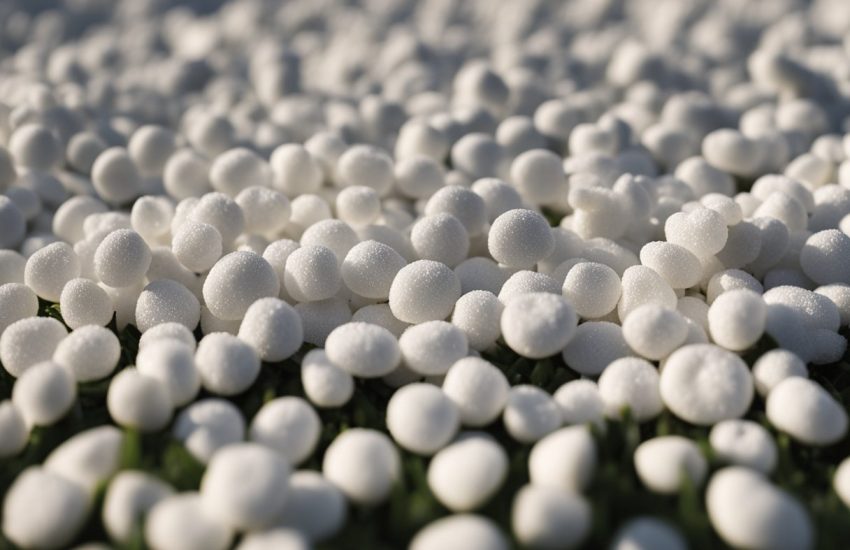Ornamental Lupine for Landscaping Enhancing Garden Beauty with Vibrant Blooms
Ornamental lupine grabs attention in the landscape with its tall, upright flower spikes and bold colors. It brings both height and texture to garden beds, turning ordinary spaces into vibrant displays.
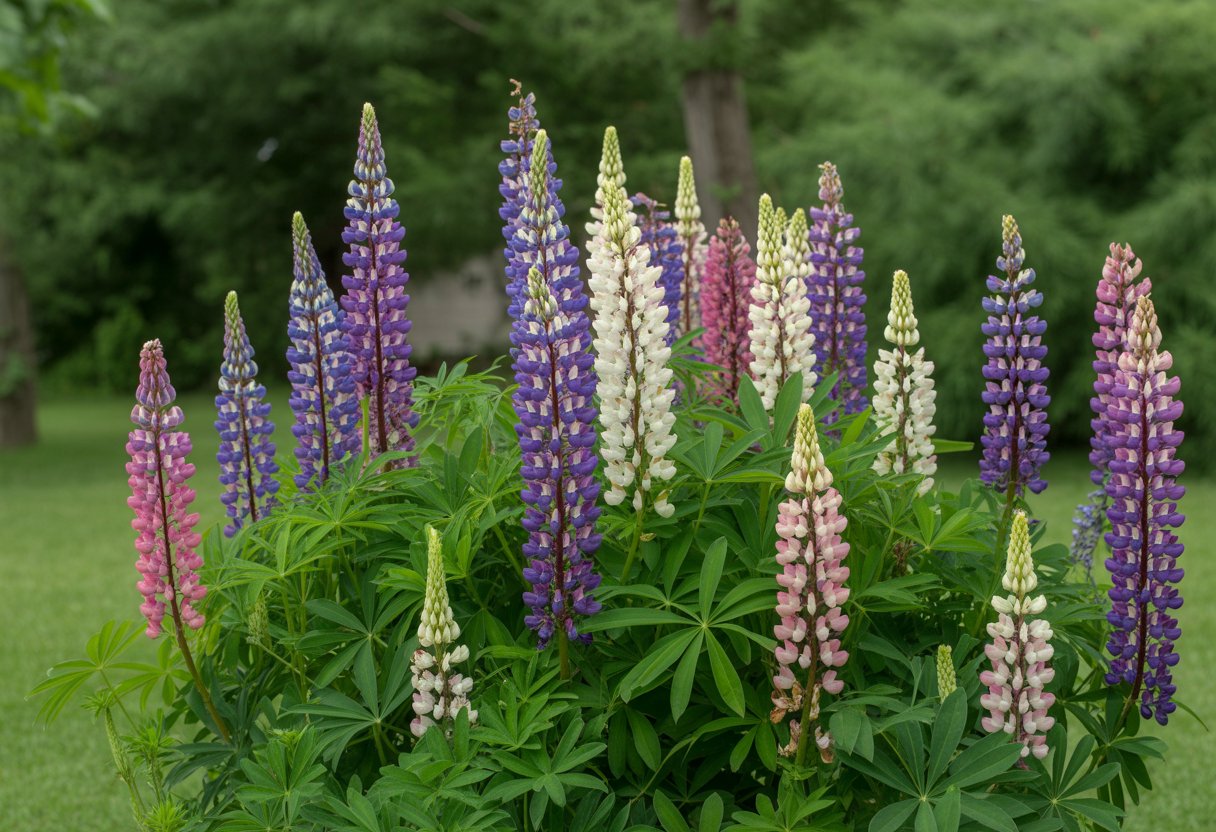
This plant thrives best in sunny spots with well-drained soil. It’s pretty low-maintenance and draws in pollinators like bees and butterflies, which is always a plus.
Lupine fits right in with both formal and wilder garden styles. It boosts visual appeal without stealing the show from everything else.
Understanding Ornamental Lupine
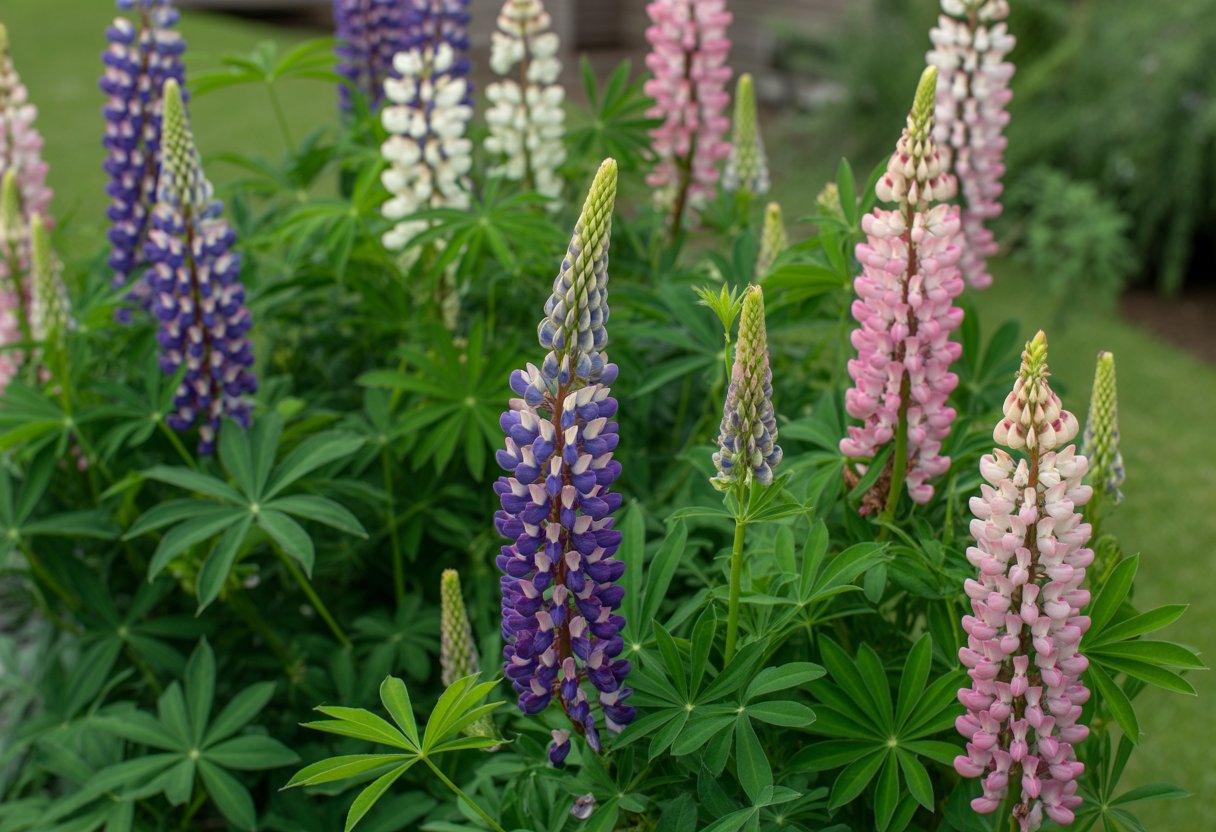
Ornamental lupine stands out for its dramatic flower spikes and ability to adapt to different garden designs. There’s a wide range of species and varieties, each bringing its own color palette and growth style.
Botanical Overview
Most ornamental lupines belong to the genus Lupinus. Lupinus polyphyllus gets used a lot in landscaping because it grows vigorously and handles different soils with ease.
These plants have palmate leaves with several leaflets, giving them a unique, textured look. They usually reach 1 to 3 feet tall and send up dense spikes of flowers.
Their roots actually add nitrogen to the soil, which helps neighboring plants. While the Texas bluebonnet (Lupinus texensis) is native to Texas, most gardens feature the showier polyphyllus hybrids.
Popular Ornamental Lupine Varieties
Some varieties really stand out. The “Mini Gallery” series stays compact and packs a punch with vivid colors, so it’s great for borders or smaller spaces.
Classic Lupinus polyphyllus ‘Russell Hybrid’ is known for tall spikes and a broad color range. The Texas bluebonnet pops up less often in ornamental gardens but has inspired a lot of breeding work.
You’ll find differences in height, flower density, and growth habit across varieties. That means there’s usually a lupine to fit whatever design you have in mind.
Visual Appeal and Color Spectrum
Gardeners love ornamental lupine for its vertical blooms, which add a sculptural vibe. The flowers come in just about every color—blues, purples, pinks, reds, and whites.
You’ll even see bi-colored and multicolored blooms, which keeps things interesting. Most lupines bloom from late spring into early summer, giving gardens a strong burst of color.
They work well as bold centerpieces or as companions to other perennials. The look is both natural and tidy—kind of the best of both worlds.
Planting and Growing Conditions
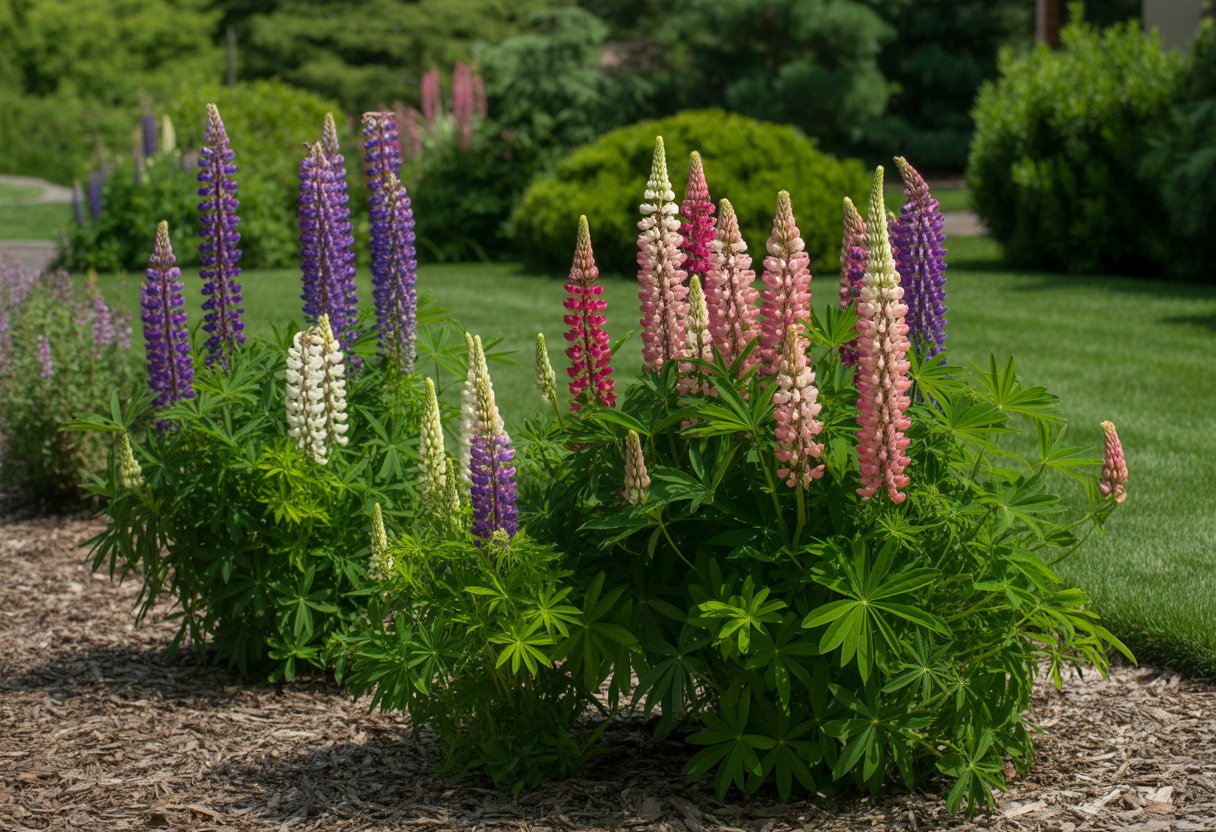
Ornamental lupine does best when you pay attention to soil, light, and water. Getting the planting details right makes a real difference in how the plants perform.
Best Planting Practices
Sow lupine seeds directly into garden soil in early spring or fall. Scarify or soak seeds for a day before planting to help them sprout.
Space plants 12 to 18 inches apart so air can move freely. If you transplant young lupines, expect a bit of a slow start.
Planting on raised beds or mounds helps with drainage, which lupines really need. Mulch around the plants to control weeds and keep moisture in, but don’t pile it up at the crown.
Ideal Soil Types and Fertility
Lupines like sandy or loamy soil that drains well. They prefer a slightly acidic pH, somewhere between 6.0 and 6.5.
If your soil is heavy or tends to stay wet, mix in some organic matter. Lupines fix their own nitrogen, so you don’t need super-rich soil.
A balanced fertilizer with low nitrogen and higher phosphorus and potassium can boost blooms. Avoid high-nitrogen blends—they’ll just make the plants leafy instead of flowery.
Sunlight, Watering, and Irrigation
Lupines want full sun, at least six hours a day. Shade makes them leggy and reduces flower production.
Water moderately. Let the soil dry out a bit between waterings because soggy roots are a no-go.
During dry spells, water deeply once or twice a week. Keep the soil evenly moist but never soaked, or you’ll invite fungal issues.
Hardiness and Climate Adaptation
Most ornamental lupines grow well in USDA zones 4 to 7. They handle cold winters and moderate summers but struggle in harsh heat or humidity.
Good air circulation helps prevent disease. Mulching and picking the right spot can shield them from temperature swings.
In hotter zones, you might need to water more often during summer. It’s a bit of a balancing act.
Care, Maintenance, and Propagation
Ornamental lupine needs some routine care to keep looking its best. Pruning, pest control, and propagation all play a role in healthy plants.
Pruning and Deadheading Techniques
Prune lupines after they finish flowering. Cut flower stalks down to the base once the blooms fade.
Deadheading—removing spent flowers—extends the blooming season and stops the plant from wasting energy on seeds. It also keeps the garden looking neat.
Use sharp, clean shears so you don’t damage stems. Pull off any yellow or damaged leaves to boost airflow and cut down on disease.
Try not to cut into woody stems; lupines usually grow back from the soft, green shoots.
Pest and Disease Management
Aphids sometimes show up and can mess with growth. Knock them back early with insecticidal soap or neem oil.
Check leaves and flowers regularly for pests. Powdery mildew, a white fungus, can appear in humid weather.
Give plants enough sunlight and room to breathe to help prevent mildew. If you spot infected leaves, remove them right away.
Don’t water from above—wet leaves encourage diseases. Switching up where you plant lupines each year can also help keep soil-borne problems in check.
Propagation Methods
Seeds and root division work best for multiplying ornamental lupines. Scarify or soak seeds before planting, then sow in early spring or fall.
Divide mature clumps after flowering by digging up and splitting the roots. Each section should have healthy shoots.
Avoid stem cuttings—they rarely succeed with lupines. Be cautious about spreading the plants in areas where they could become invasive.
Landscape Benefits and Ecological Impact
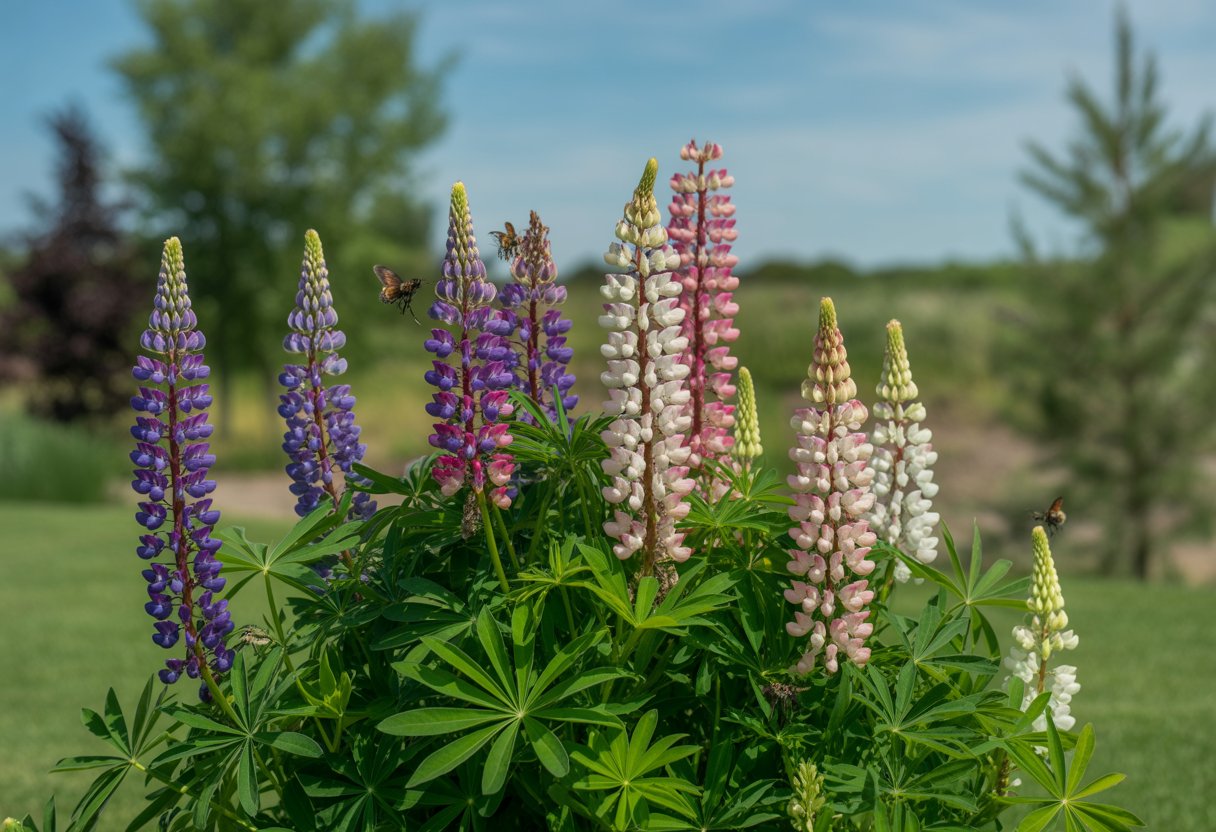
Ornamental lupine does more than just look good. It supports garden aesthetics and helps local ecosystems at the same time.
Attracting Bees, Butterflies, and Pollinators
Lupine’s dense, colorful spikes are loaded with nectar and pollen. Bees and butterflies flock to them, especially when other food sources are scarce.
The structure of the plant makes it easy for pollinators to forage. Bees use the nectar for energy, and butterflies rely on it for migration and reproduction.
Lupines usually bloom in spring or early summer, right when pollinators need them most. If you want your garden to buzz with life, lupines are a solid bet.
Promoting Biodiversity
Ornamental lupine helps boost biodiversity by attracting a bunch of different insects. Plus, it benefits soil health since it fixes nitrogen right in the ground.
This process improves soil fertility for nearby plants. As a result, you’ll often see a richer mix of species popping up around lupine.
Lupine draws in a range of pollinators, which means it indirectly supports other plants that rely on those animals to reproduce. It’s a small ripple effect, but over time, it helps keep the ecological network in your garden balanced.
You might notice lupine showing up in rough, disturbed soils. It tends to act as a pioneer species, stabilizing the ground and cutting down on erosion.
Once it’s settled in, lupine creates better conditions for other native plants to take root. That’s a win for anyone hoping to see more diversity in their landscape.


